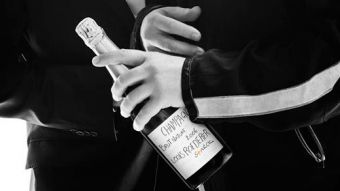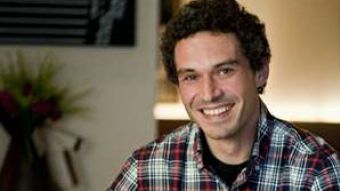‘We are going to place Sumoll among the great wines of the world’.
Pepe Raventós advocates the creation of a north-eastern sparkling wine appellation in Penedés, while raising the quality of Can Sumoi with a new top-of-the-range wine.
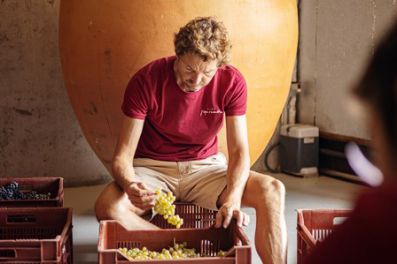 Copyright photo @raventosiblanc ‘Living in New York gave me the courage to leave the DO Cava’. Pepe Raventós has a dizzying schedule but he finds space to say hello, share and explain himself. He went to the United States with the idea of staying for one year, but in the end he stayed for five. He didn't abandon his oenological project, in fact, he knew how to read it and make it grow in spite of the Atlantic. He crossed it frequently to define Raventós i Blanc's close ties with the Conca del Riu Anoia and, above all, to defend the legacy received, that of his father Manuel Raventós and that of the twenty generations that preceded him.
Copyright photo @raventosiblanc ‘Living in New York gave me the courage to leave the DO Cava’. Pepe Raventós has a dizzying schedule but he finds space to say hello, share and explain himself. He went to the United States with the idea of staying for one year, but in the end he stayed for five. He didn't abandon his oenological project, in fact, he knew how to read it and make it grow in spite of the Atlantic. He crossed it frequently to define Raventós i Blanc's close ties with the Conca del Riu Anoia and, above all, to defend the legacy received, that of his father Manuel Raventós and that of the twenty generations that preceded him.
They were the first to be declassified from the DO Cava in 2012. He acknowledges the sacrifices made over the years, but today he is more convinced than ever of the step they took. ‘The origin is what makes the wine, not the requirements,’ he says. He advocates the creation of a north-eastern sparkling wine appellation of origin in the Penedés region.
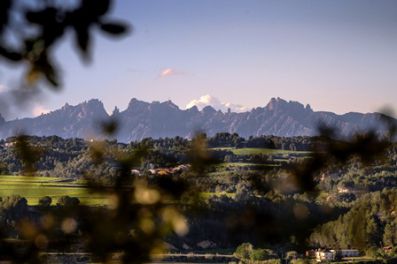 Copyright photo @raventosiblanc He has just turned 50 and is full of enthusiasm. He is concerned about the collective but also wants to focus on the personal: ‘I haven't given up yet. Within this appellation you have to draw the valleys, the villages and the vineyards. Sell grapes at one, two and three euros per kilo’. And he adds: ‘I like to buy grapes as well as grow my own. There are winegrowers who work very well, their life is the vineyard, I listen to them and we pay them for their efforts. I believe in an appellation of origin of winemakers and winegrowers’. He has enough energy to try to bring together the dispersion that bubbles are currently experiencing in Catalonia: ‘I dream of a quality Penedès of mainly xarel-lo and sumoll vines, inserted in the agricultural mosaic that we are, full of biodiversity. We can compete with Champagne if we take on this new division of quality with conviction. In the United States I learned something I believe in. It goes like this: Don't hate the players, change the game’. He has started talks with INCAVI; it remains to be seen what the other producers think.
Copyright photo @raventosiblanc He has just turned 50 and is full of enthusiasm. He is concerned about the collective but also wants to focus on the personal: ‘I haven't given up yet. Within this appellation you have to draw the valleys, the villages and the vineyards. Sell grapes at one, two and three euros per kilo’. And he adds: ‘I like to buy grapes as well as grow my own. There are winegrowers who work very well, their life is the vineyard, I listen to them and we pay them for their efforts. I believe in an appellation of origin of winemakers and winegrowers’. He has enough energy to try to bring together the dispersion that bubbles are currently experiencing in Catalonia: ‘I dream of a quality Penedès of mainly xarel-lo and sumoll vines, inserted in the agricultural mosaic that we are, full of biodiversity. We can compete with Champagne if we take on this new division of quality with conviction. In the United States I learned something I believe in. It goes like this: Don't hate the players, change the game’. He has started talks with INCAVI; it remains to be seen what the other producers think.
He is not suffering from the drought but he is counting the litres that are falling. Four are scheduled for the afternoon in April when we talked. ‘The balance of the 2023 wines is world class. Our main struggles are powdery mildew and downy mildew. It bothers me that the climate crisis brings arguments that we have to plant vineyards at altitude when it is natural to the Mediterranean. I defend dry-farmed viticulture; the weather determines the vintage. In Penedés, today we have an immense opportunity to make wines that age well, with a touch of rusticity, austere and saline’, he warns.
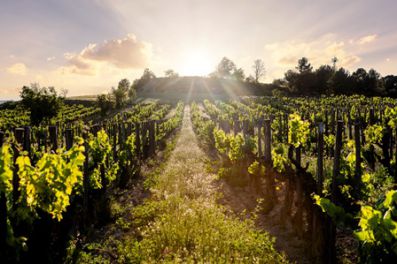 Copyright photo @raventosiblanc While he consolidates Raventós i Blanc as a reference, his efforts are focused on giving more value to Can Sumoi, the oenological project of still wines rooted in the Serra de Montmell. ‘It is an area of great potential and altitude. There are stony and calcareous soils, with dry stone margins around the vineyard. In 2016 we started to vinify the Sumoll grape in a very artisanal way, we are going to place it among the great wines of the world. It has enough tannin to achieve longevity,’ he says. The first vintage, the 2021, the most balanced, will be released in September: ‘The key is the old vineyard and the small oval berry. Then, fermentation in open barrels with a large volume and the passage through cement. We don't use stainless steel because it reduces. We also use a light contact with the skins’. He tries Eastern European oak and chestnut, the native wood of Catalonia. ‘French oak eats the Sumoll,’ he says. The wine spends two years in the barrel and two more in the bottle.
Copyright photo @raventosiblanc While he consolidates Raventós i Blanc as a reference, his efforts are focused on giving more value to Can Sumoi, the oenological project of still wines rooted in the Serra de Montmell. ‘It is an area of great potential and altitude. There are stony and calcareous soils, with dry stone margins around the vineyard. In 2016 we started to vinify the Sumoll grape in a very artisanal way, we are going to place it among the great wines of the world. It has enough tannin to achieve longevity,’ he says. The first vintage, the 2021, the most balanced, will be released in September: ‘The key is the old vineyard and the small oval berry. Then, fermentation in open barrels with a large volume and the passage through cement. We don't use stainless steel because it reduces. We also use a light contact with the skins’. He tries Eastern European oak and chestnut, the native wood of Catalonia. ‘French oak eats the Sumoll,’ he says. The wine spends two years in the barrel and two more in the bottle.
Pepe Raventós is a lover of Barolo wines and has studied the method of the region and its grapes. The result is a fresh, agile and elegant wine, wild and balsamic. ‘We are also thinking of recovering an abandoned farmhouse in Montmell and building a small winery there,’ he says. He talks about the need to trust and commit himself to the territory and praises it, insisting on its magical naturalness. ‘I left social work, which is my profession and my passion, to help my father get the company back on its feet’, he recalls. Now he sees everything as easier despite the current situation, full of challenges and complexities.
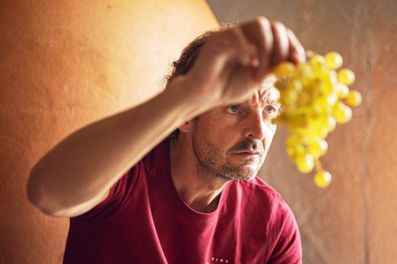 Copyright photo @raventosiblanc Raventós i Blanc is celebrating the release of the 2013 vintage of Mas del Serral, the iconic vineyard of old xarel-lo vines that graces a small hilltop overlooking Montserrat. It is cultivated biodynamically and a Spanish-Breton horse participates in the tillage. ‘It is the latest vintage of the last 40 years and a wine defined by the terroir. There is freshness, acidity and salinity. It is a vintage that will go down in history for its frankness and expression’, says Pepe Raventós. 100 months of ageing on lees in rhyme. Light and life behind the calm. This is their main trump card, but they dare to do more. Mas del Serral will premiere a blend of Xarel.lo and Sumoll planted in 2009 crowning the micro-plot. The 2013 vintage will also be released. The oenological quality confirms Pepe Raventós' intuition, that of combining two varieties that, in his opinion, must define the direction of the Penedès that he lives in and defends, as well as placing it in the world.
Copyright photo @raventosiblanc Raventós i Blanc is celebrating the release of the 2013 vintage of Mas del Serral, the iconic vineyard of old xarel-lo vines that graces a small hilltop overlooking Montserrat. It is cultivated biodynamically and a Spanish-Breton horse participates in the tillage. ‘It is the latest vintage of the last 40 years and a wine defined by the terroir. There is freshness, acidity and salinity. It is a vintage that will go down in history for its frankness and expression’, says Pepe Raventós. 100 months of ageing on lees in rhyme. Light and life behind the calm. This is their main trump card, but they dare to do more. Mas del Serral will premiere a blend of Xarel.lo and Sumoll planted in 2009 crowning the micro-plot. The 2013 vintage will also be released. The oenological quality confirms Pepe Raventós' intuition, that of combining two varieties that, in his opinion, must define the direction of the Penedès that he lives in and defends, as well as placing it in the world.
Quick test.
- Besides Raventós i Blanc, Pepe Raventós and Can Sumoi, a winery that has impressed you: Domaine Didier Dagueneau.
- A winemaker: Paul Draper of Ridge Winery
- A wine region: Jura
- A grape variety: Sumoll
- A wine to enjoy: La Fusta de Toni Carbó (Celler la Salada)
- A wine to share: Las Beatas by Telmo Rodriguez
- A wine for a good meal: Giacomo Conterno
- The most expensive wine you've drunk: I can tell you the ones I've liked the most, but I don't know the most expensive ones.
- The most expensive wine you have bought: Château Rayas 98
- Finish the sentence ‘Wine is like life, love’.


